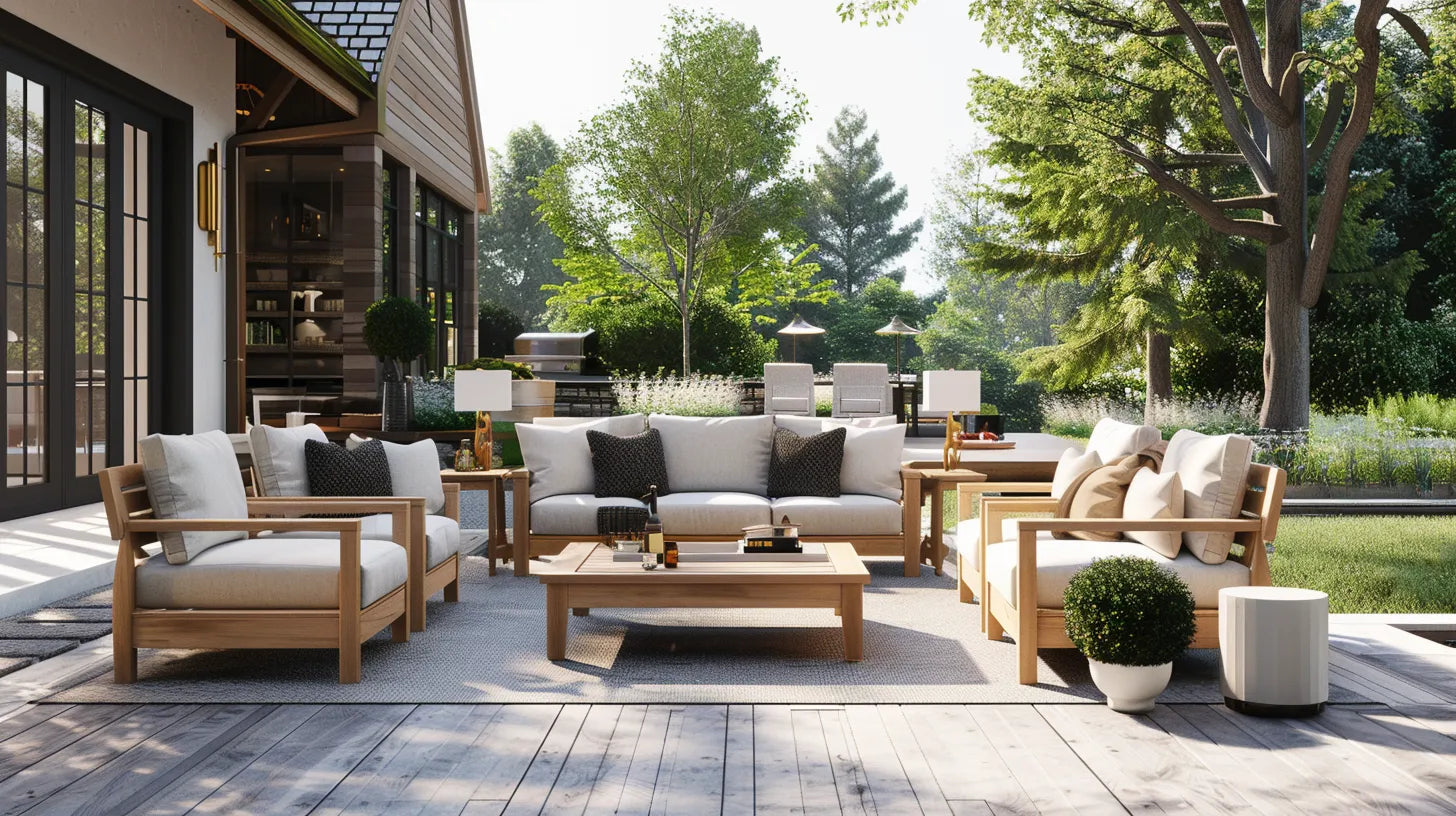All-weather outdoor furniture must blend aesthetics with resilience, using materials such as teak, aluminum, synthetic wicker , and powder-coated steel for exceptional durability and weather resistance . Regular maintenance including protective coatings, storing under covers, and appropriate treatments preserve the furniture's integrity across seasons. Design versatility is key, with an emphasis on seasonal styling —from vibrant summer colors to cozy winter fabrics—to enhance outdoor ambiance. The right furniture maximizes longevity, functionality, and comfort, making them apt for varying climatic conditions . Exploring these aspects can reveal deeper insights into optimizing your outdoor living space for year-round enjoyment.
Material Selection Criteria
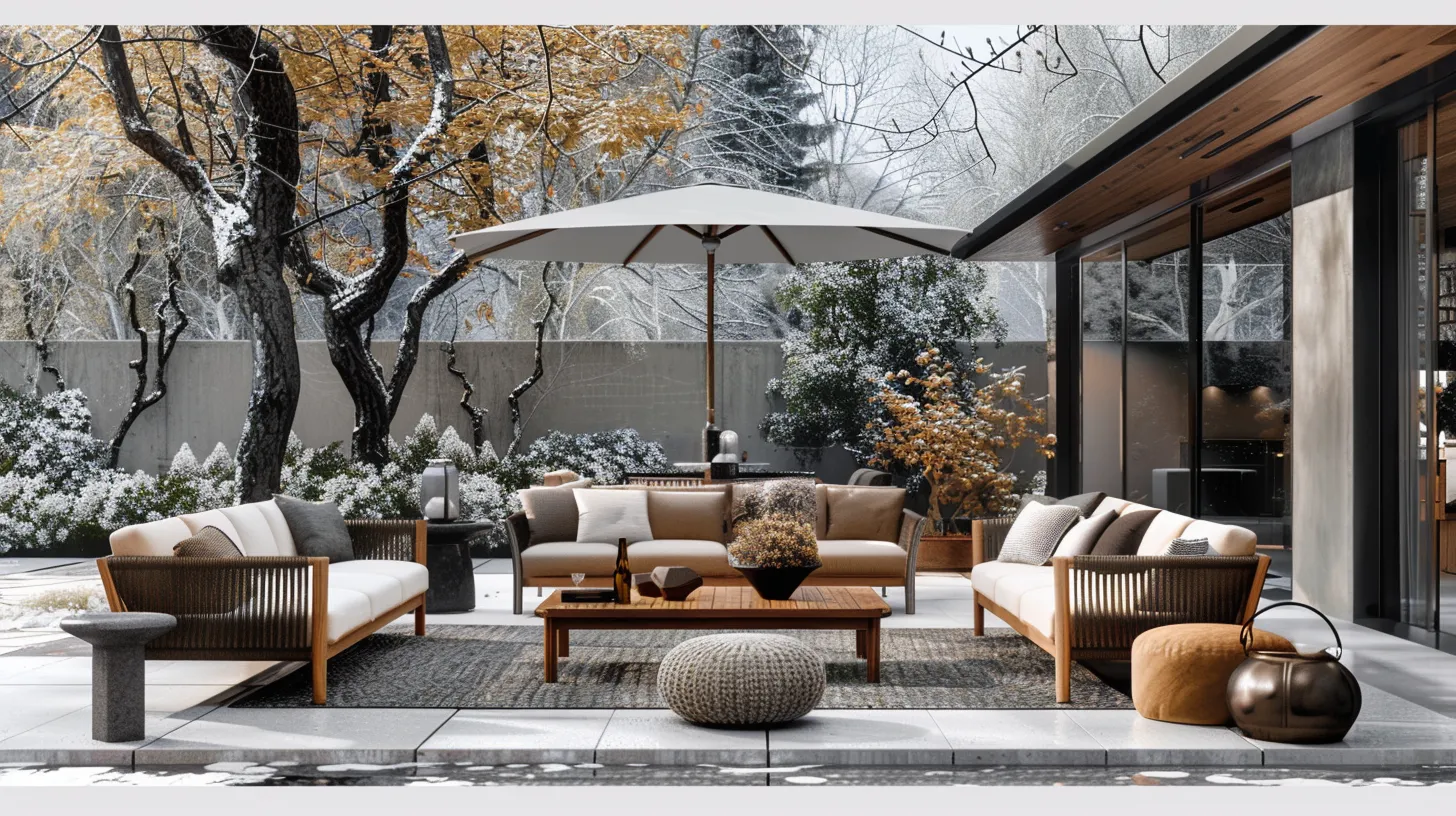
When choosing materials for outdoor furniture, it is essential to take into account factors such as natural resistance to moisture , insect damage, and overall durability. Teak, for example, is highly valued for its exceptional durability and natural weather resistance. This makes it an excellent choice for outdoor settings as it is less likely to suffer from the effects of moisture and insects.
Aluminum is another favorable option due to its lightweight and rust-resistant properties . It stands out in providing a variety of style options , allowing for flexibility in design aesthetics while ensuring long-lasting performance in diverse weather conditions. Aluminum's resistance to rust is particularly beneficial for maintaining the furniture's appearance and structural integrity over time.
Synthetic wicker and powder-coated steel are also robust choices. Synthetic wicker is designed for all-weather conditions , offering durability and a wide palette of color options which contribute to its versatility in style and design. Powder-coated steel, recognized for its sturdiness , enhances the durability and rust-resistance of outdoor furniture pieces, making them suitable for exposure to various environmental elements without compromising on style or functionality.
Maintenance Best Practices
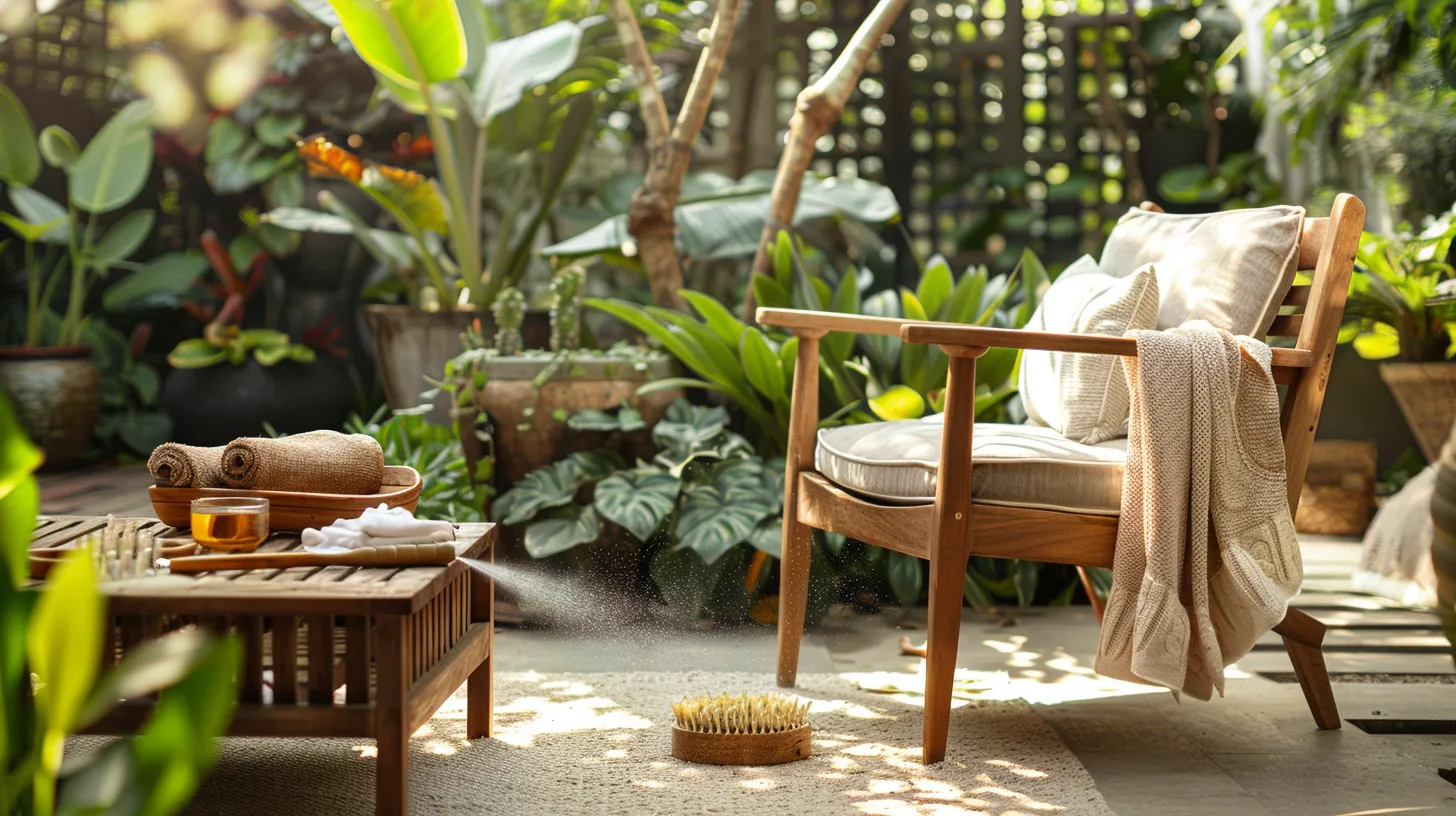
Properly maintaining outdoor furniture guarantees its longevity and preserves its aesthetic appeal across all seasons. Outdoor furniture maintenance involves various practices tailored to each material's needs. For instance, applying a protective coating to wood patio furniture not only enhances its resistance to moisture and heat but also extends its life, safeguarding years of use. Similarly, metal furniture benefits from regular dusting with a dry cloth, which prevents buildup and maintains its pristine look.
To maximize UV protection and moisture prevention, storing plastic and synthetic resin furniture indoors during extreme weather is advisable. This action helps mitigate damage from harsh conditions, effectively prolonging the furniture's usability. Additionally, using fabric covers for outdoor seating and cushions can shield them from UV rays and dampness, essential for maintaining fabric integrity and color.
Lastly, consider the longevity extension and durability enhancement of concrete outdoor furniture through specific treatments. Sealing or treating concrete surfaces makes them more resilient against weather elements , enabling them to withstand varying climatic conditions without deteriorating. Through these targeted maintenance strategies , one can ensure that their outdoor furniture remains functional and attractive throughout the year.
Seasonal Styling Tips
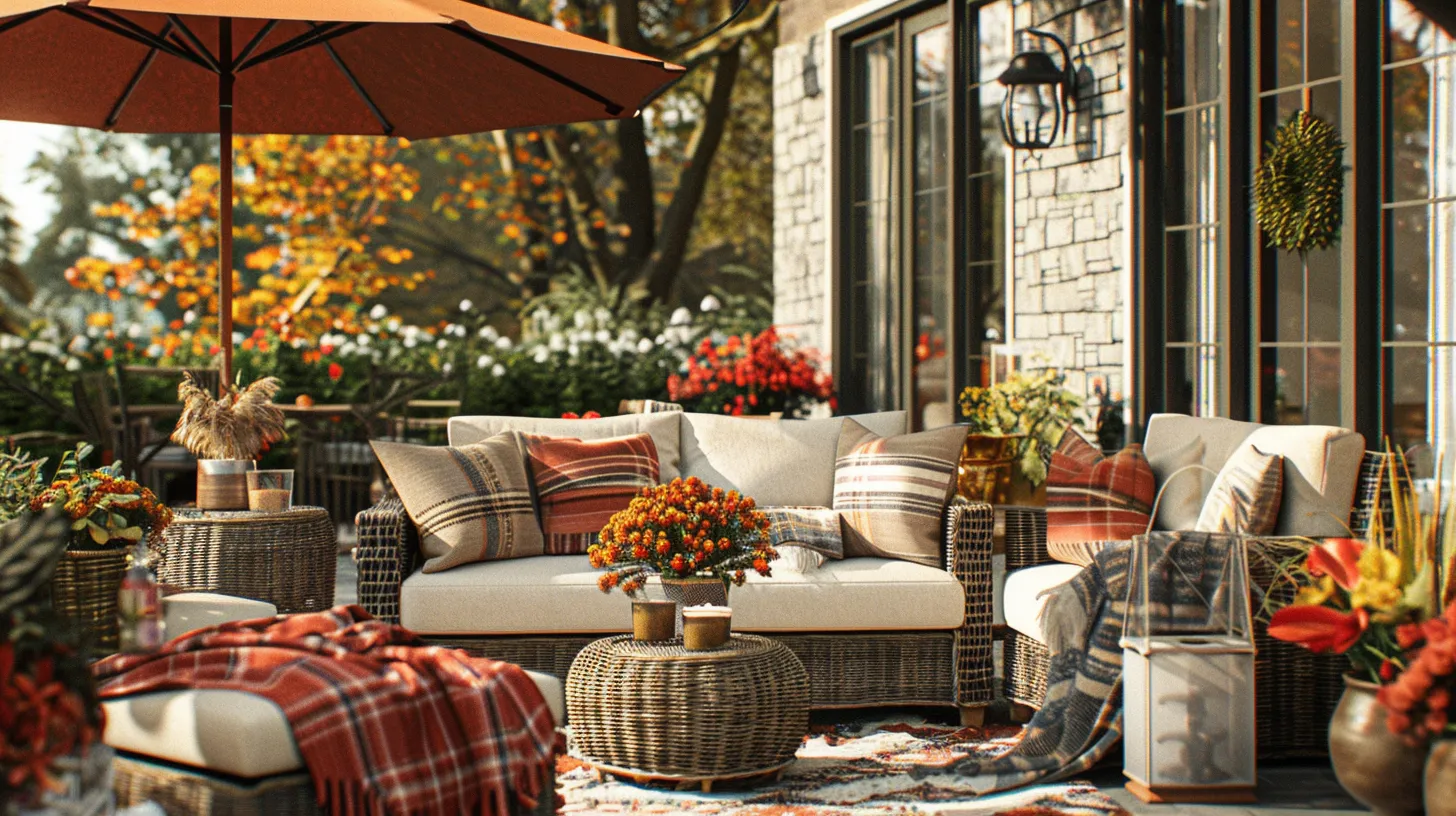
Seasonal styling tips for outdoor furniture allow you to enhance the aesthetic appeal of your space by incorporating elements that reflect the current time of year. To create a vibrant and inviting outdoor setting, utilize bright, vibrant colors and patterns in your outdoor decor. These dynamic choices can transform your furniture and surroundings, making them feel fresh and lively as seasons change.
During the colder months, swap out lightweight seasonal fabrics like linen or cotton for heavier materials such as velvet or wool. These textiles not only add a touch of luxury but also help retain warmth, contributing to a cozy atmosphere . Outdoor rugs are another essential element; they bring warmth and texture, particularly during autumn and winter, enhancing the comfort underfoot.
Add throw blankets and pillows in seasonal hues to further define your outdoor space with a cozy, inviting flair. Consider incorporating elements of seasonal foliage to give a festive touch . Decorative items like pumpkins in the fall or pine cones in the winter can celebrate the season's spirit while adding natural beauty to your decor. Through these thoughtful enhancements, your outdoor furniture setting can remain stylish and functional, no matter the season.
Climate Considerations
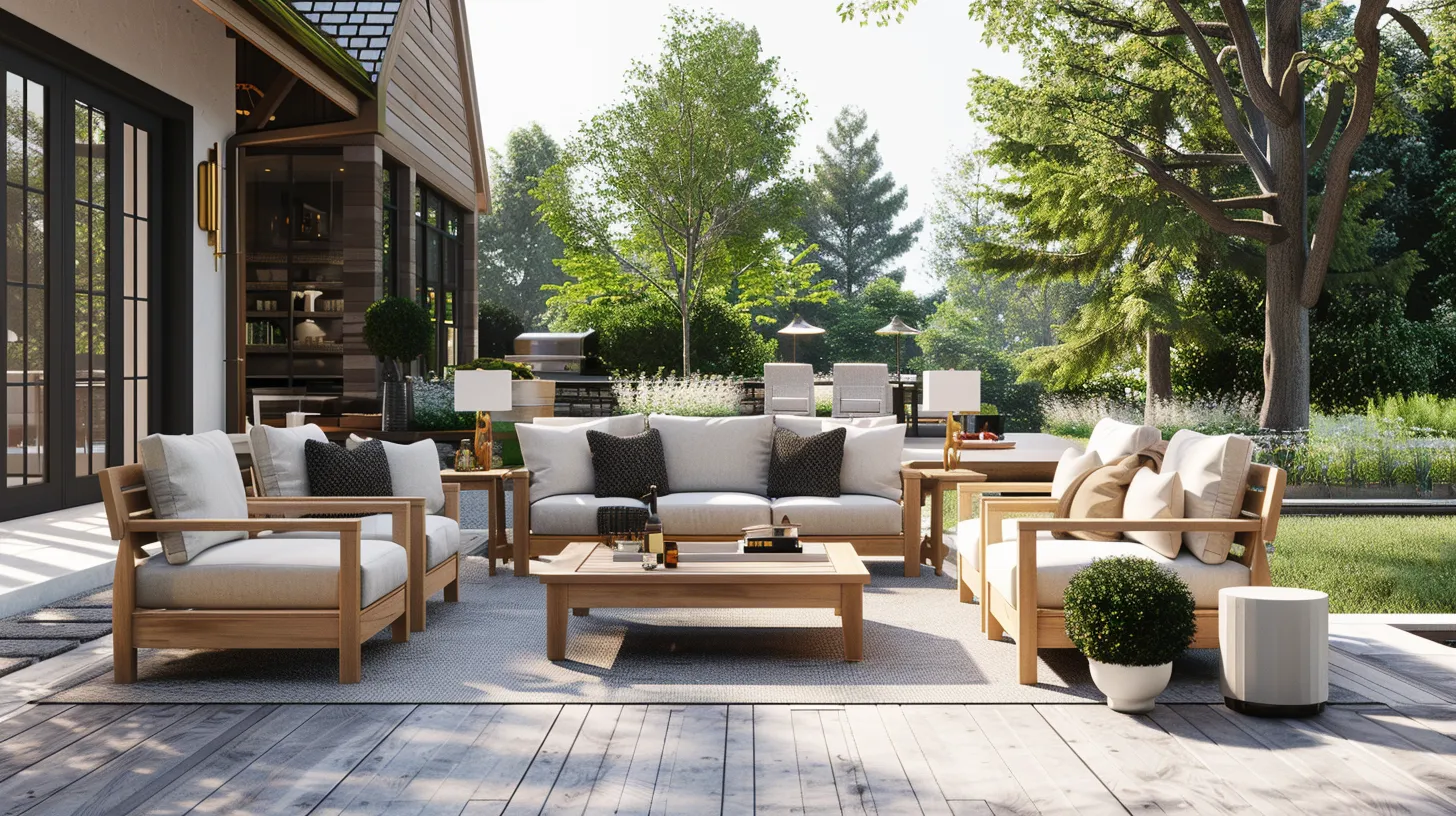
Understanding the specific climate considerations is essential when selecting materials for all-weather outdoor furniture. The choice of weather-resistant materials must align with the particular demands of your local climate to guarantee durability and functionality. For instance, areas with high humidity levels necessitate furniture that can resist mold and mildew, while regions experiencing extreme temperature fluctuations require materials that will not crack or warp under such conditions.
When evaluating options for all-weather outdoor furniture, it is vital to take into account how different weather conditions in your area can impact the longevity and appearance of your furniture. Materials like teak, aluminum, and synthetic wicker are popular choices due to their robust weather-resistant properties. Teak is highly valued for its exceptional resistance to rot and insects , making it suitable for wet climates. Aluminum offers durability and lightness, with added benefits of rust resistance , ideal for coastal areas. Synthetic wicker, on the other hand, stands up well against UV radiation and moisture , ensuring it remains intact and visually appealing despite sun exposure and varying humidity levels.
Selecting the right materials based on climate considerations not only enhances the lifespan of outdoor furniture but also ensures it remains functional and aesthetically pleasing throughout the seasons.
Durability Features
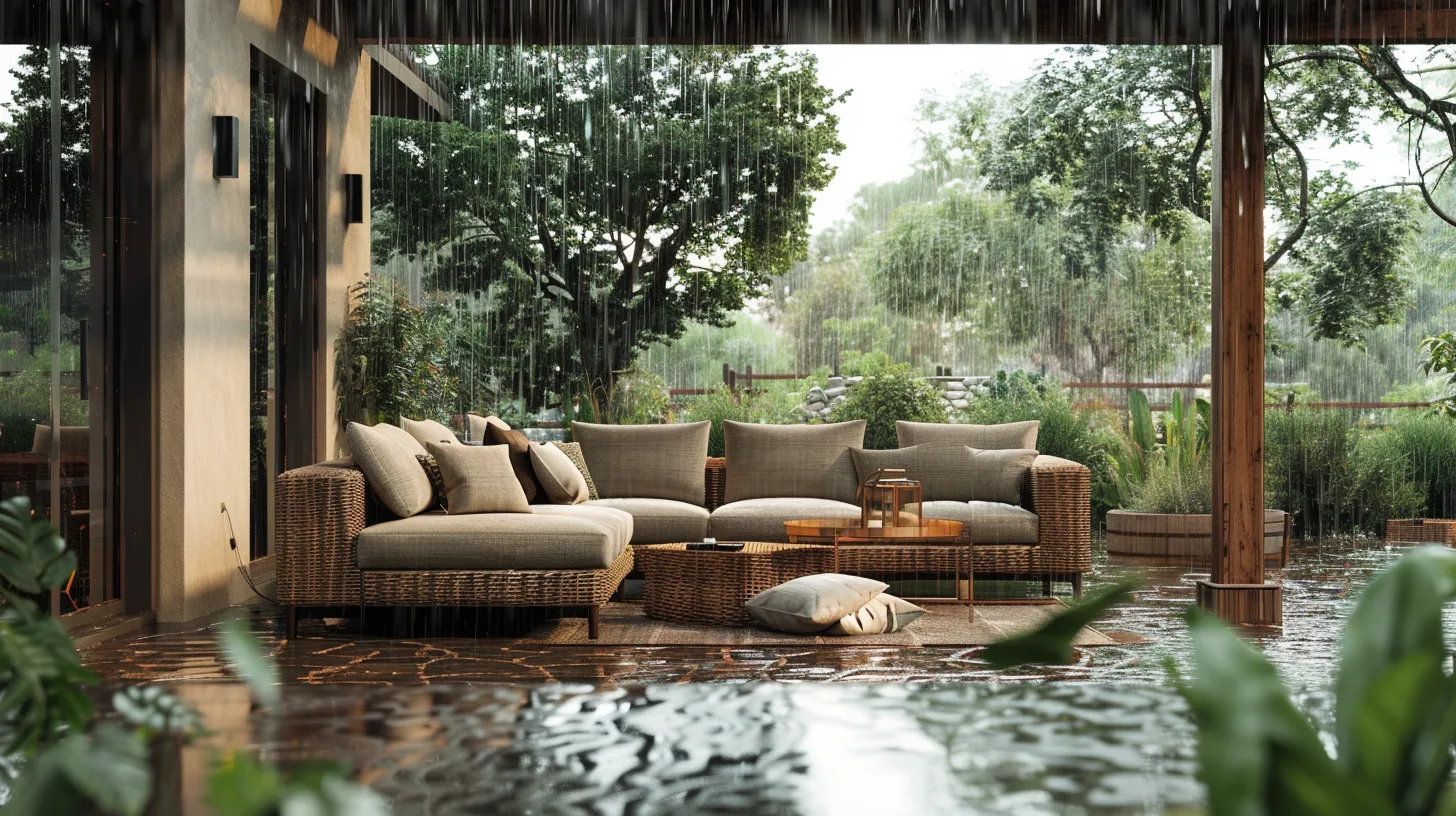
Durability is a paramount concern when selecting materials for all-weather outdoor furniture, ensuring long-term functionality and aesthetic appeal. Teak wood , revered for its robustness, naturally resists rotting and pests, embodying an ideal choice for enduring outdoor settings. This hardwood's reliability extends to minimal maintenance requirements, enhancing its appeal for use in various climates.
Aluminum, noted for its lightweight and rust-resistant properties , stands out in the domain of outdoor furniture. Its resistance to corrosion and ease of maintenance make it well-suited for all-weather conditions, marrying practicality with modern design. Similarly, HDPE wicker represents a synthetic alternative that champions durability . It withstands UV rays and is easy to clean, ensuring longevity and continuous aesthetic appeal without substantial upkeep.
Stainless steel, celebrated for its strength and corrosion resistance , offers a dependable option for outdoor furniture frameworks. Its ability to withstand diverse weather conditions without deteriorating makes it a stalwart choice. Concrete , with its solid composition and weather-resistant capabilities , not only promises durability but also contributes to a modern aesthetic, offering a visually appealing, maintenance-friendly option in outdoor furniture design . These materials collectively ensure resilience across seasons, making them integral to crafting reliable, stylish outdoor furniture.
Comfort and Functionality
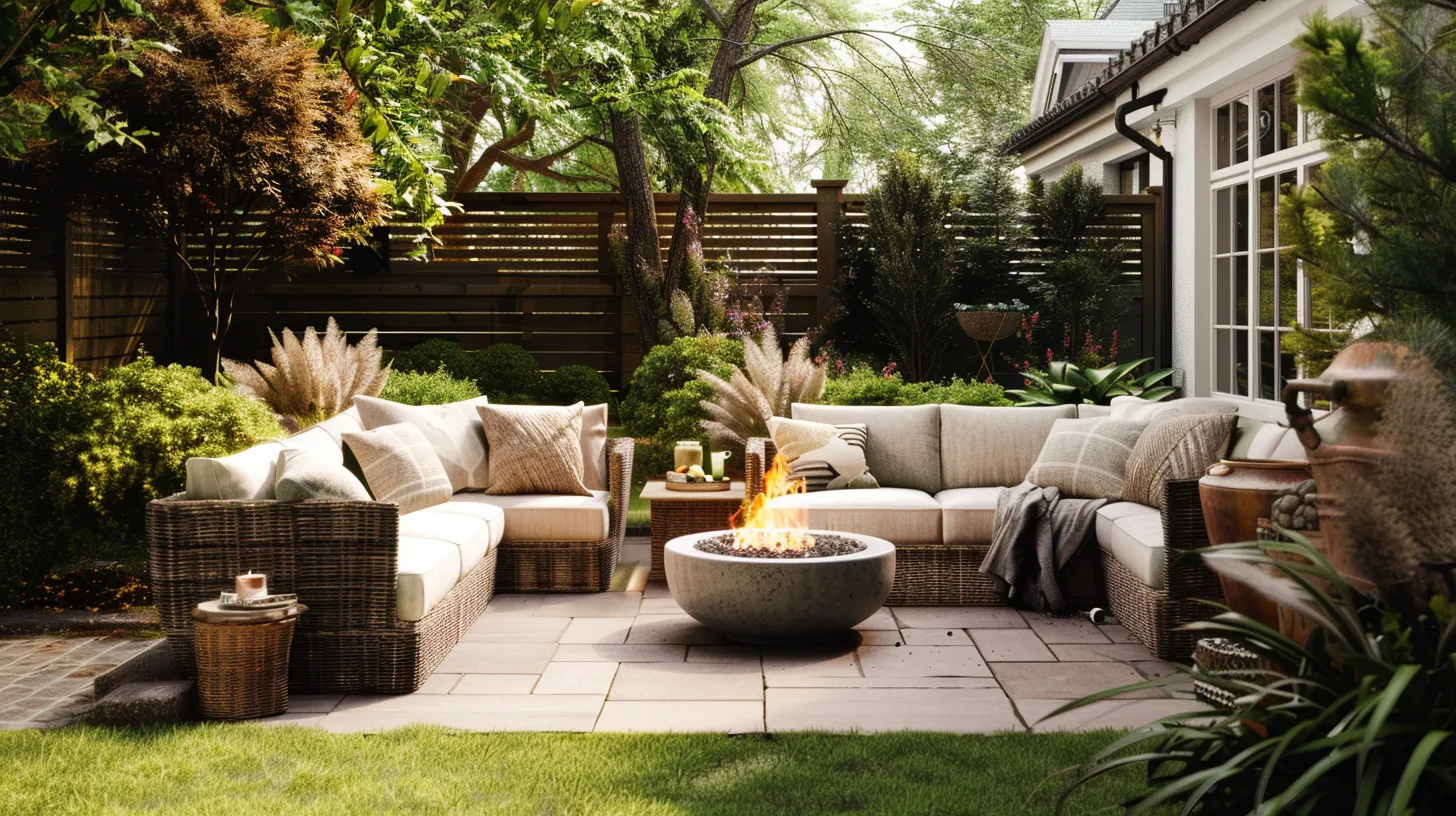
While durability forms the foundation of all-weather outdoor furniture , comfort and functionality are equally essential for enhancing user experience. The integration of plush cushions and ergonomic designs guarantees that each piece not only withstands the elements but also provides maximum comfort. Adjustable features like reclining options cater to personalized relaxation needs, making outdoor spaces more inviting.
Functionality in outdoor furniture is amplified through the use of weather-resistant materials and innovative designs like storage benches and convertible tables . These elements allow for versatility in usage, adapting to different occasions and weather conditions seamlessly. Multi-functional pieces , such as dining sets with extendable tables or modular seating arrangements, offer flexibility while optimizing space utilization. This is particularly important in maximizing both the seating capacity and the functionality of seating arrangements in varied outdoor settings.
Moreover, thoughtful design elements such as built-in cup holders and integrated lighting enhance the practicality and comfort of outdoor furniture. These features not only improve the usability of furniture during different times of the day but also contribute to the overall ambiance of outdoor living spaces . By focusing on both comfort and functionality, outdoor furniture becomes a cornerstone of enjoyable and adaptable outdoor living.
Accessorizing Outdoor Spaces
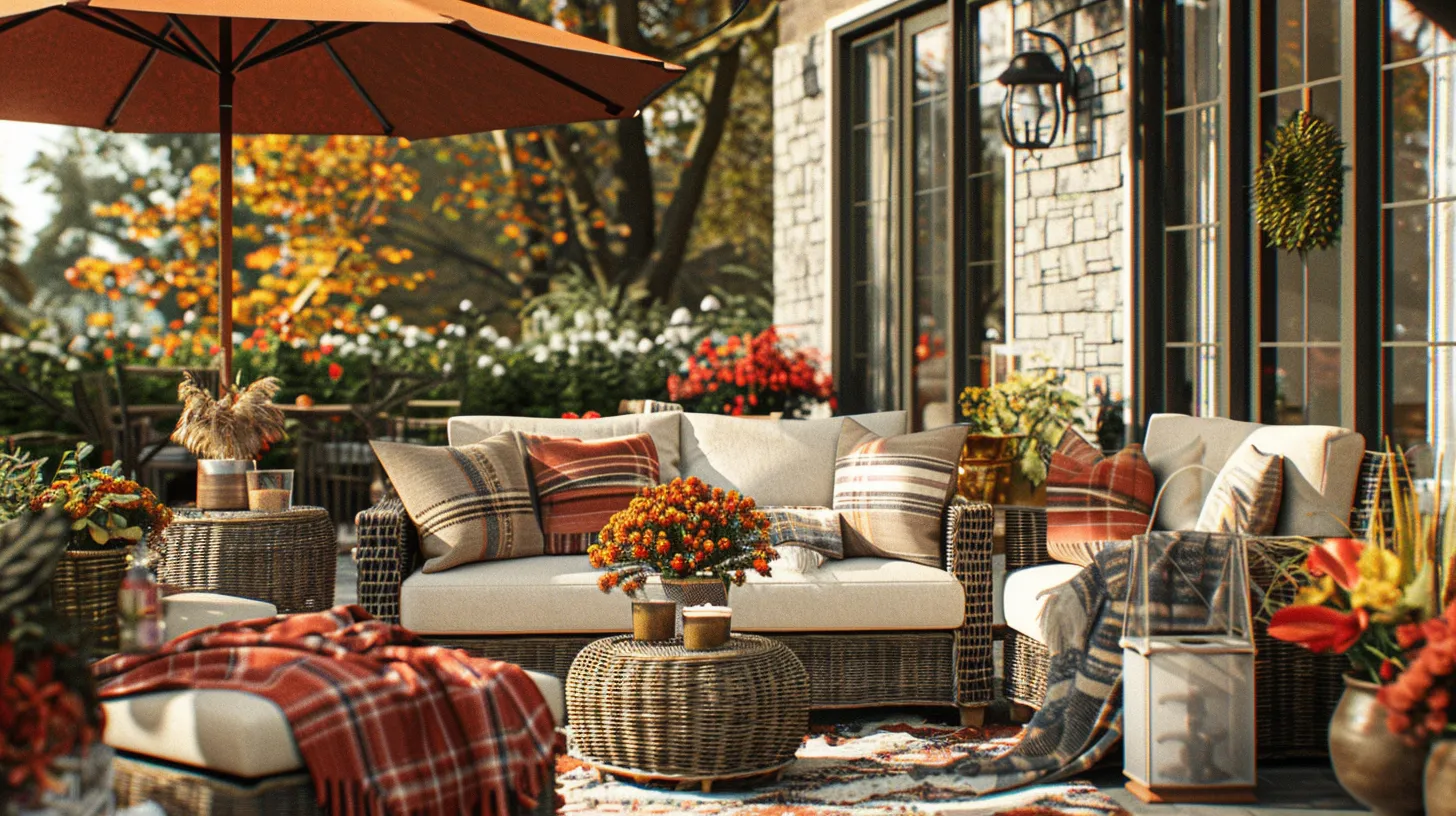
Accessorizing outdoor spaces , such as by incorporating rugs, throw pillows , and lanterns , greatly enhances the ambiance and functionality of these areas. Adding decorative yet practical elements like weather-resistant rugs can define the lounging zones, while throw pillows add a splash of color and comfort to outdoor seating. Lanterns not only illuminate the space but also create a cozy, inviting atmosphere.
For those who enjoy dining al fresco, installing a dining table featuring an umbrella hole becomes essential. It provides not only a shaded dining area but also a focal point for gatherings. This setup can be complemented by bar stools around an outdoor kitchen , which elevate the space's functionality and aesthetic appeal. Comfortable seating, such as the UV-resistant Fatboy Toni Chair , ensures durability and style, making the outdoor dining experience enjoyable regardless of the weather.
Lastly, the right lighting solution is pivotal for extending the usability of outdoor spaces into the evening. The Fatboy Bolleke Light , with its three adjustable light modes, offers flexibility, ensuring that the outdoor area is well-lit for any occasion, enhancing both safety and atmosphere. This holistic approach to accessorizing not only beautifies the space but also maximizes its use throughout the seasons.


